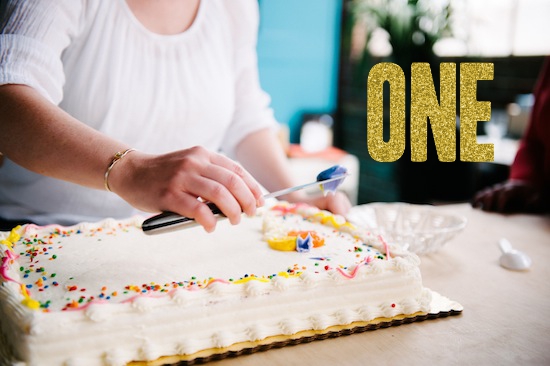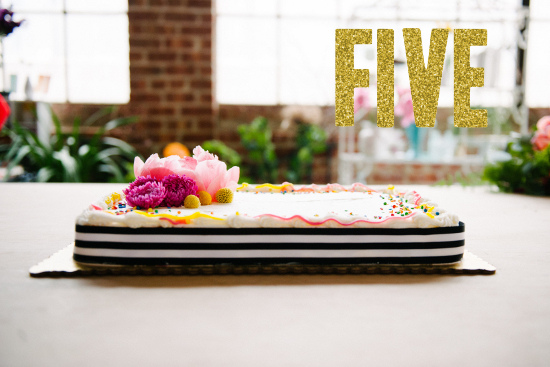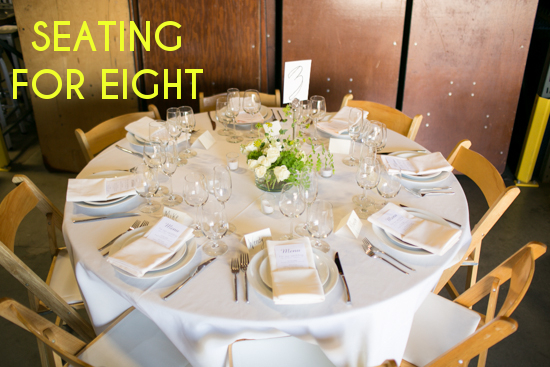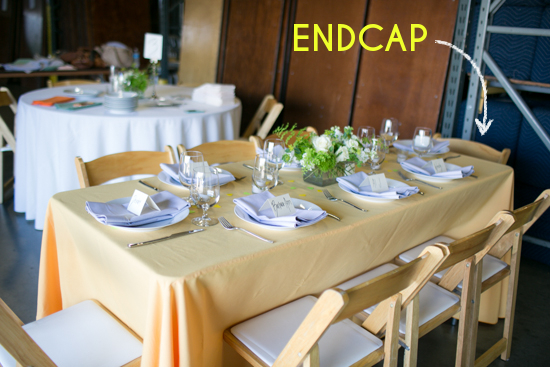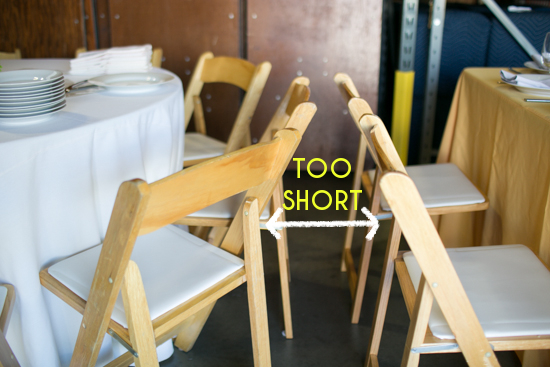Tips for Creating the Perfect Timeline for Your Wedding Day

PocketWatchPurveyor note: This article by Elizabeth Clayton of A Practical Wedding provides an excellent starting point for scheduling your special day, minute by minute.
Timelines can be confusing when you’ve never done one—even if you’ve attended a lot of weddings you probably haven’t paid much attention to how long each individual aspect lasted (barring the rare occasion that you end up an hour-long ceremony indoors without air conditioning on a 102 degree day. Which nobody forgets). So today I’m going try and shed some light on how to keep your wedding moving, without feeling rushed or ending up with weird chunks of time where nobody knows what to do.
First, it’s worth noting that timelines are a guideline, not canon. I often go into a wedding with a two-paged, single-spaced timeline—it contains every single thing that every single person is doing for the entire day. (Famously, I often edit them before sending them to other vendors, because they scare the crap out of some people.) But, as I tell all of my clients, it’s the extremely rare wedding that hits every single point at the minute it’s supposed to. We extend cocktail hour because people are having fun (and/or the kitchen is running late). We move up the first dance because everyone finished eating early. We move last call out thirty minutes because we were able to start breaking down early and know we have time. Starting and ending the wedding on time are key—hitting everything in the middle in the approximate right order is important, but you usually have to adjust a little to the particular set of people.
And because the 4pm ceremony time, 10pm reception end (with both ceremony and reception in the same venue), with secular ceremony and photos beforehand is one of the most common formats I work with, I’m going to start with that as my example. But don’t worry! Next week we’re going to talk about variations on this timeline, like religious or otherwise longer ceremonies, daytime weddings, later evening weddings, separate ceremony and reception sites, and separate ceremony and reception times (i.e., gaps).
But for now, let’s dig into the format I mentioned above, with the timeline I use for almost all of the weddings that fit this mold:
- 10:00am—Hair and Makeup/Getting ready
- 12:00–2:00pm—Most vendors arrive for setup
- 2:00pm—Wedding party and family photos start
- 3:30pm—Doors open/Guests begin to arrive/Pre-ceremony music starts
- 4:00pm—Invite time
- 4:15pm—Ceremony starts
- 4:35pm—Ceremony ends
- 4:40pm—Cocktail hour starts
- 5:45pm—Move guests into dinner
- 6:00pm—Buffet opens/Dinner served
- 6:20pm—All guests have food
- 6:30pm—Toasts
- 7:30pm—First dance
- 7:35pm—General dancing music starts
- 8:00pm—Second set of pre-sunset portraits
- 8:26pm—Sunset
- 8:30pm—Dessert
- 9:45pm—Last call
- 9:55pm—Music off
- 10:00pm—Guests depart
- 11:00pm—Breakdown done, all staff departs
Invite Time vs. Start Time
The “invite” time is the time on your invitation. The earliest guests will show up about half an hour before this, so be prepared for that. And then there are the late guests. No matter the size of your guest list, you can put money on the fact that ten of them will be around ten minutes late, even if they’re all staying down the street from the venue. Do yourself a favor and plan on starting the ceremony fifteen minutes after your invite time. There’s nothing more awkward than a late arrival standing at the back of the aisle because the bridesmaids are walking down.
Food Timing
Timing for dinner depends largely on 1) what type of food service you’re having (the most common options being buffet, family style, and plated) and 2) how large your guest list is. It takes about twenty minutes for one hundred guests to get through a buffet. Plated courses are usually spaced about forty-five minutes apart. And family style also takes about fifteen-twenty minutes for one hundred guests to be served. Plan accordingly—I highly suggest starting with a minimum of bread on the table to give guests something to snack on while they wait for their turn at the food, although plated salads are also a great way to start out an otherwise buffet meal for the same reason. And of course, always discuss timing with whoever is actually serving your food—they should have the best idea for your particular menu.
Toasts
I really encourage people to do toasts during dinner—you have a captive audience, and people are in a headspace to be attentive, plus you don’t have to carve separate time out of the day for them to happen. Note: Make sure the first person to give a toast tells all of the guests to please continue to eat while people are speaking! And also make sure to tell the catering staff that they should continue to serve/clear/etc. while people are speaking (they’re good at doing this discreetly). (Editor Maddie’s note: Don’t forget to tell your photographer too! We usually eat when guests eat, because face-stuffing photos are unattractive. So make sure we’re not knee-deep in the lasagna when toasts start by giving us a heads up on when toasts will start. Though it’s always best when your timeline is shared with your photographer at least a week or two before the wedding so that we know in advance.) (Elizabeth’s note on Maddie’s note: This is why I have the photograhper’s go through a buffet first, yes, before the guests. Or if it’s plated or family style I’ll discuss with them and either have them eat at the end of cocktail hour, or once toasts are done. Please don’t forget to feed your vendors!)
Sunset
Note what time it’s going to happen! (There are lots of places online that will tell you—I personally use this site, possibly because I love the name, but I also find it to be totally accurate.) You’re going to want to think about lighting, especially if your event is happening partially outdoors. And also…
Portraits/Photos
Whether or not you opt for an “official” photographed first look, the truth is that a lot of couples these days tend to do formal portraits before the ceremony, because otherwise you’re stuck wrangling people during cocktail hour, which a) means they’re less compliant and b) you miss out on mingling with your guests/stuffing seared shrimp in your mouth (Editor Maddie’s note: or scallops wrapped in bacon. Mmmm…). Also, I always suggest a second set of portraits right before sunset for two reasons—the light is totally different, and gorgeous (they don’t call it golden hour for nothing) and you’re also in a totally different space emotionally—the ceremony is over, you may have had a glass of champagne, and you’re married, as opposed to about to get married in an hour. You really only need to budget ten to fifteen minutes for these, and you should plan on it being just the two of you and your primary photographer. This mini session also has the added benefit of giving you a short break away from the crowds.
Cake/Dessert Timing
While this rule seems to have gotten lost over the generations, traditionally it’s considered acceptable to leave a wedding once the cake has been cut—at that point you know that nothing else major is going to happen (it’s just partying from there on out) and hey, maybe you have a sitter to get home to, or just want to be in bed to watch the ten o’clock news. And while you may not be aware of this rule, if you have any guests over sixty-years-old then they do, and they will wait for you to cut the cake (or alternative dessert. I’m personally a pie girl myself). So don’t wait until too late to do it. I mean, no one wants to leave without a piece of cake (or, again, pie).
Last Call
The universal signal that things are about to wrap up or wind down. You don’t have to make it official, but if you do it can be a helpful to sign to people that they should start preparing (mentally) to leave.
Breakdown
If your venue has strict timing rules, or noise restrictions, or you’re paying a staff hourly and they’re going to go into overtime or time-and-a-half at some point, don’t forget about breakdown. While generally faster than set up (it’s a lot quicker to toss decorations into a box than it is to take them out and perfectly arrange them) I rarely see a breakdown that’s under an hour, and sometimes they end up in the one to two hour range. Think about all of the things that are going to need to happen once the lights go on and how much time that will take, and plan the end of the night accordingly.
After Parties
(and why you should have one)
“But really, I know we’re going to want to party until 1am!” you say. Dude—me too. But we’re in the minority. I am already anticipating a lot of rebuttal on this point in the comments, but as someone who’s coordinated over a hundred weddings I will tell you—I can count the number of weddings where there has been a critical mass of guests still wanting to go after 10:30pm on my fingers. And two of them took place on New Year’s Eve. And most of the rest had 6:00pm or later ceremonies. Six hours is about the most that most weddings guests have in them. That said, should you make everyone go home at 10pm? Hell no. Move people to an afterparty. My favorite way to do this, because it’s the easiest, is to pick a nearby bar ahead of time, spread the word, and whoever wants to go can go. Do you have to host (as in, pay for) the afterparty drinks? Definitely not. You certainly can, and it would be super nice, but after paying for everyone’s drinks for six hours, you’re off the hook (and I will tell you—if you walk into a bar in a wedding dress there’s definitely no one in the world who’s going to make you pay for you own drinks!). Also—if the majority of your guests are staying in the same hotel, that hotel bar can be a great option for this, and they may allow you to bring extra wedding champagne in for a reduced corkage fee.
Originally appeared at http://apracticalwedding.com/2013/03/calculate-wedding-timeline/
